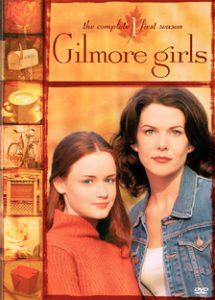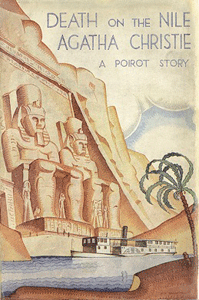Hercule Poirot desires order and method in all aspects of life – not only when solving crimes but also when playing matchmaker. Fans sometimes giggle over the idea of “Poirot the Matchmaker,” but he plays this role so often that it’s not a joke or an accident. He’s at the top of his matchmaking game in “Death on the Nile” (1937), a certified classic for that and many other reasons.
In her second and most famous novel set in the Middle East (where she loved to vacation), Agatha Christie eventually forms a great puzzle. It’s solvable yet ingenious, hinging on one of her core lessons: Don’t get stuck on preconceptions. Don’t ignore the clue that doesn’t fit your preconception – that clue is the key to solving the mystery. Whether a reader figures it out or is tricked, they’ll adore “Nile’s” clever resolution.
Before the death: Romance on the Nile
But before that, “Nile” is about romance – specifically, one spurned romance. Jacqueline de Bellefort and Simon Doyle are a happy couple until Jacqueline’s friend, tabloid socialite Linnet Ridgeway, steals Simon away. In one of the most impressive feats of stalking in literary history, Jackie follows the newlyweds all over Europe and the Middle East. It crosses the line from disturbing to outright impressive.

“Death on the Nile” (1937)
Also published as: “Murder on the Nile” and “Hidden Horizon”
Author: Agatha Christie
Genres: Mystery, romance
Series: Hercule Poirot No. 16
Setting: Nile River, Egypt, 1937
Poirot, sympathetic toward charming young women (although not to the degree of Hastings, who is absent as the sidekick in favor of Colonel Race), warns Jackie to not let evil into her heart. As I get further into my reading of Christie novels, I notice she often touches on an idea in one book and makes it the central theme of a later book. The way evil can encroach on one’s psyche calls to mind 1939’s “Murder is Easy.”
Meanwhile, Christie throws a rare bone to a self-described homely woman, Cornelia Robson, who draws the attentions of multiple suitors on the cruise ship churning along the titular Egyptian river. First up is Mr. Ferguson, who is rather admirable in his horribleness. He’s a rare Communist who openly acknowledges his political system requires violence and he’s totally fine with that.
Ferguson plays out a Christie cliche (perhaps found in many novels of this era) wherein a man suddenly proposes marriage to a woman he has only just met. In cases where Christie adaptations are moved into modern times, I assume these moments are changed to the man asking the woman out on a date. In 1937, people didn’t live as long; maybe that’s why they cut to the chase.
Sparkling collection of characters
A robust 276 pages, “Nile” starts leisurely; you’d think this is a love-triangle romance rather than a mystery. Then the plot kicks into gear and doesn’t relent until that final reveal. Then it adds a shocking (and shockingly tossed off) denouement.

Several passengers have motives in what is mostly a closed-location story. Jaunts to the shoreline for tourist attractions nicely give us a sense of the Middle East – more so than in “Murder in Mesopotamia” (from one year prior), which is mostly contained to one building. Memorably, a group of local lads bury themselves in the sand up to their heads, hoping tourists will toss them a few coins for the amusement.
The leisurely start buys Christie time to give the passengers personalities. Yes, they are “types” that can be found in others of her novels – the glamorous woman, the money-hungry financier, the mean old lady – but the variety helps the cruise ship sparkle with energy.
There’s one morose young lady who could’ve been explored more, plus one random fellow who isn’t on the promenade deck (where the core cast is). But generally, Christie delicately threads a needle of character and plot. We know a lot about these people, but deeper insights are saved until after the reveal. Like a lot of Poirot’s cases, this one will be solved by understanding the killer’s psychology.
Race-ing to the finish
In a side plot that made me chuckle, Race is on this boat because he is pursuing a criminal in an international case. It’s like he’s in one of Christie’s spy adventures and he just happens to cross paths with his friend. I’m glad he does, providing Poirot a sounding board. (And he’s a more patient one than Hastings. He accepts that if he can’t figure it out even with Poirot’s hints, that’s on him.)
Poirot and Race – who, granted, have no legal jurisdiction – go extrajudicial at the end of “Nile.” We’ve seen Poirot behave similarly in “The Murder of Roger Ackroyd” and “Peril at End House.” He’s a good person who is open to helping troubled people before they commit a crime. But once they do, it’s like he has said elsewhere: “I do not approve of murder.”
This year’s screen adaptation embellished Christie’s work to give Poirot personal troubles. But that’s not necessary. Poirot is the star of “Death on the Nile” simply by pushing for order in the case and method in romantic couplings. I admire that he does it with nudges rather than force; he has a big personality but a delicate touch.
Poirot – like Christie with her puzzle crafting – is truly an artist at these sorts of things.
Sleuthing Sunday reviews an Agatha Christie book or adaptation. Click here to visit our Agatha Christie Zone.

